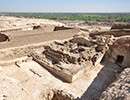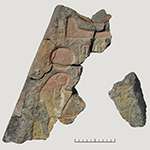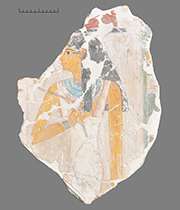Discovery of a the pyramid of a Ramses II Vizier at Luxor

The Egyptian Antiquities Minister, Dr. Mohammed Ibrahim, announced on Wednesday February 20, the discovery of a new pyramid from the Ramses era, found over the course of archaeological research being carried out on the Cheikh Abd el-Gourna hill by a joint University of Liege and Free University of Brussels mission.
Imprints on the monument's brickwork indicate that the pyramid belonged to a Vizier of Upper and Lower Egypt called Khay, who carried out this function, equivalent to that of a Prime Minister, for some fifteen years during the reign of the Pharaoh Ramses II (around 1279-1213 before the Common Era).
The pyramid measures 12m sideaways and its original height reached 15 metres. The monument, built from adobe brick, was covered with a white coating and capped with a stone pyramidion decorated with the image of the owner worshipping the god Rê-Horakhty. The pyramid was constructed in the courtyard of an older tomb belonging to the deputy of the chancellor Amenhotep, discovered by the Belgian mission in 2009.

A remarkable fixture of the Theban landscape
Situated on one of the hill's crests and overlooking the Ramses II (Ramesseum) funerary temple, Khay's pyramid without a doubt constituted a remarkable fixture in the Theban landscape. The monument was largely destroyed in the 7th-8th centuries of our common era, when the tomb was transformed into a Coptic hermitage.
Pyramids of adobe brick were constructed above the tombs of senior dignitaries during the Ramses era in the Theban necropolis. The Vizier's tomb is situated immediately below the pyramid, under a modern villager's house, and remains to be explored.
The discovery is one of extraordinary importance, because the Vizier Khay is well known to Egyptologists through numerous documents. Occupying the highest civil function in the kingdom, Khay was involved in the celebrations of Ramses II's first six jubilees. He also supervised the community of artisans entrusted with building the royal tombs within the Valley of the Kings and the Valley of the Queens. Two statues of the Vizier, today in the Museum of Cairo, come from the Karnak Cachette, discovered in 1903.

During the excavations of the tomb of Amenhotep (TT C3), the mission also discovered magnificent fragments of wall paintings dating from the reign of Thoutmosis III (around 1479-1427 before our common era).
Provided by University de Liege




















